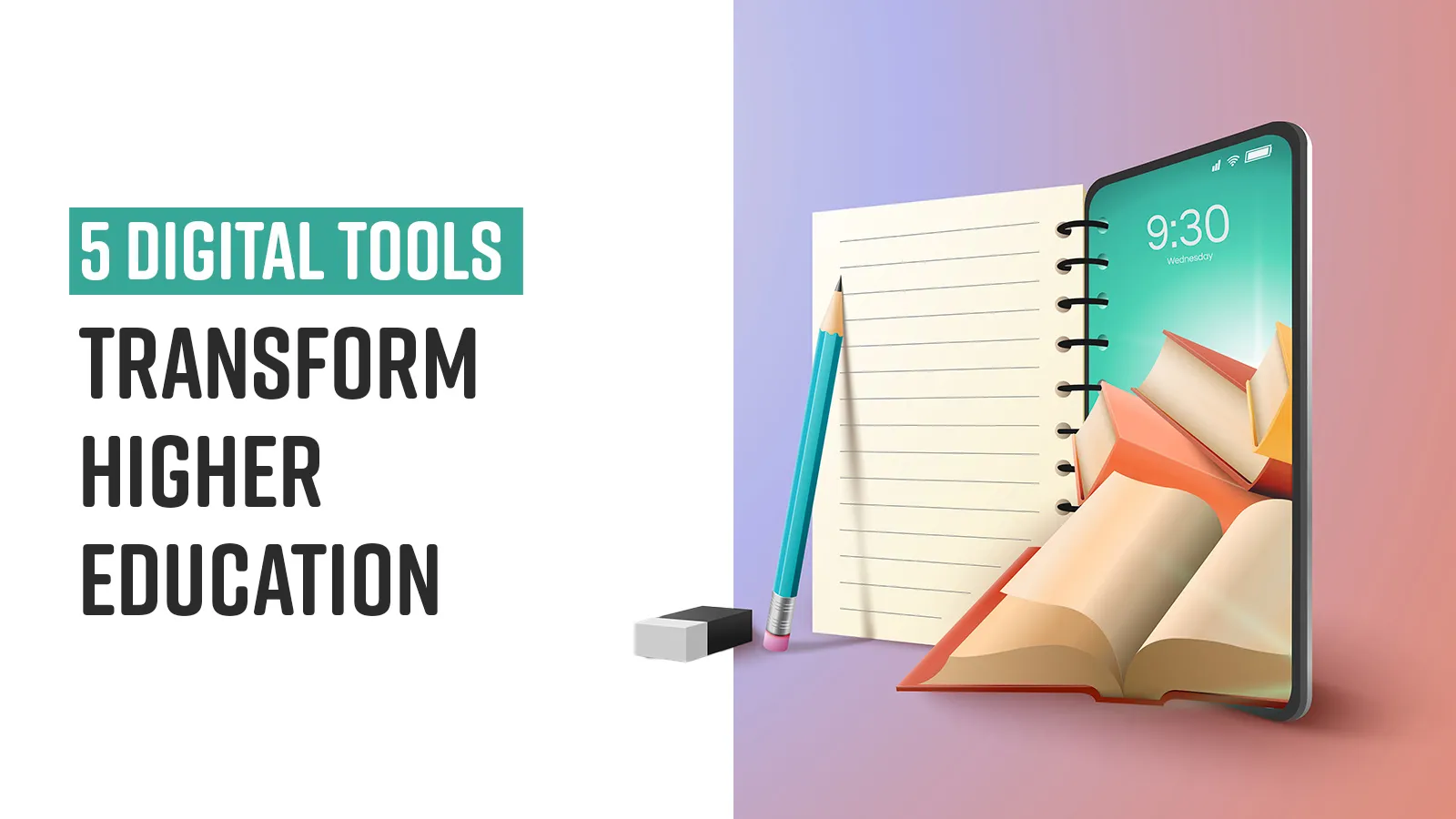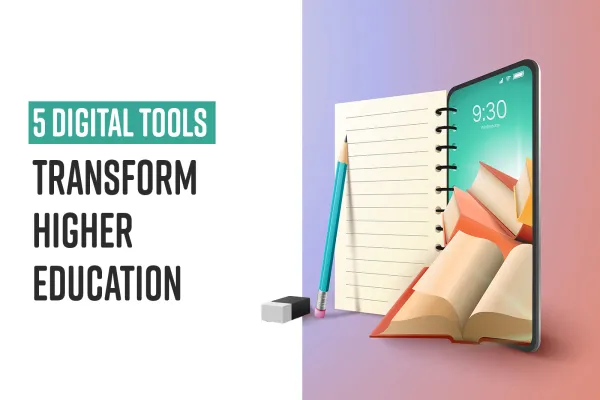In our previous blog, we talked about how adaptive learning and badging in gamification can have a critical impact on higher education. The rising demand for these digital tools amongst institutions has prompted edtech companies to focus on technologies that empower education. In this blog, we list our three core digital tools that can greatly impact and transform higher education.
Blended Learning
Also known as hybrid learning, it combines the best of online and offline worlds to deliver lessons to students. Blended Learning comes with a range of benefits including better opportunities for experiential learning, enhanced teacher and student interaction, a more flexible teaching, and learning environment, and time management and flexibility among others. About 53% of the students are willing to adopt the idea of online courses offered on a blended or university-owned platform, suggests a report by Pwc.
Popular models of blended learning are:
- Flipped model that enables educators to share education content before the class session. The instructors can share this content on LMS, or through e-mails.
- Face-to-Face Driver Model uses webinars or Zoom meetings to deliver a learning session. While the learning takes place online, assignments can be set later and shared using LMS.
- Enriched Virtual model of blended learning enables students to complete their coursework online, while also attending webinars. Here, the attendance is ad hoc and enables learners to grasp concepts at their own pace.
Apps supporting hybrid learning
- Edmodo app integrates with Google Apps and Microsoft Online and serves as a collaborative platform for teachers, students, and parents.
- Lesson Paths enables flexible and individualized learning and works on a playlist model. One can assign a playlist that already exists on the platform or can create a new playlist. Students are eligible to have their playlist as well.
- Voicethread enables the articulation of students’ thoughts, along with collaborative participation. The platform enables the uploading of over 50 different kinds of files. Students can comment through different means like a phone call, text, video, and chat.
Enhanced Classroom Technologies
The adoption of classroom technologies in higher education space is revolving around “Learning ready classrooms”, a word coined by Dr. Maggie Beers from San Francisco State University. The current focus is on designing and scaling equitable and inclusive learning spaces with tools for active learning like writable surfaces and wheeled furniture.
Apps for smart classrooms
- SCALE-UP rooms have circular tables along with displays. This allows students to work on their assignments, plug in their laptops, and simultaneously share screens.
- Too Noisy is the app which monitors and controls the level of noise in a classroom.
- Class Dojo is a behavior tracking app where teachers can monitor students’ behavior.
- Teacher Kit is a class management app that puts multiple tools into use and organizes class data. It also keeps track of the students’ performance.
Learning Analytics
This digital technology is used with online learning services, where its application involves the implementation of new structures and methods that are dependent upon predictive modeling. Learning Analytics implementation in higher education brings in key strengths, such as the availability of multiple visualizations for staff and students, the ability to use powerful, pre-existing algorithms, large volumes of available educational data, precise models for adaptation and personalization of learning, and growing insight into learning strategies and behaviors.
Apps supporting learning analytics
- OnTask, an analytics solution, integrates data from learning management systems or other online learning tools and enables instructors to define progress indicators. The dashboard allows instructors to check students’ progress, both individual, as well as aggregated.
- The Threadz, a tool for developing network visualizations, makes use of learning analytics by giving instructors manipulable visualizations of students’ interaction and communication within forums. It uses reliable metrics which indicate students’ degree of engagement.
- Simple Reports, a platform that draws historic data of course registration from the past, and matches it with the current one, gives a clear understanding of students' data. This gives a clear demographic understanding of students to understand likely future choices in which a student is to major.
Investing in digital tools for transforming higher education can help institutes reap tangible benefits on operational and strategic goals. Digital tools mentioned above can improve the performance of institutions by redesigning the campus experience. In our coming insights, we shall focus on how the institutions can plan a successful roadmap around mounting revenues and operational and pedagogical challenges.




